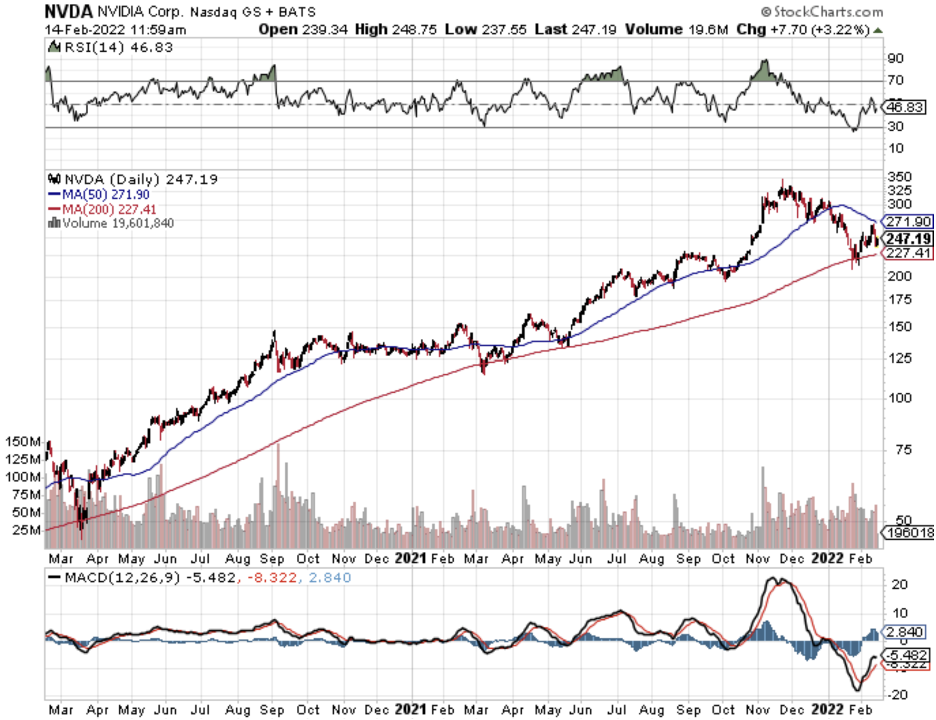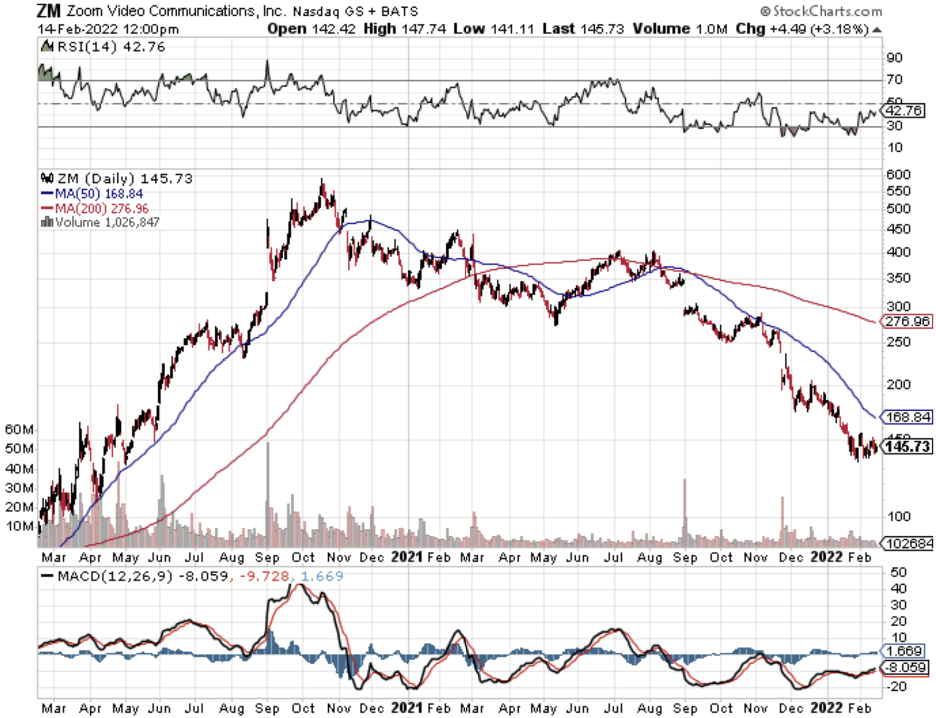Nvidia (NVDA) is one of the best buy-the-dip tech candidates after the pullback from around $350.
This is one of the premier tech stocks of our generation and readers shouldn’t be fooled by the recent weakness.
NVDA simply has been dragged down with the rest of the best as technology still tries to find some footing after a rough January that was sideswiped by exogenous shocks out of NVDA’s control.
Tech growth stocks have been pigeonholed as one broad category, and even though NVDA boasts a sterling balance sheet that achieved $4.33 billion in profits in 2021, they are penalized with the general category of growth stock.
The rotation into energy and commodities has been swift, but make no mistake, this company is no Teladoc (TDOC) or Zoom Video (ZM), unequivocally not.
NVDA sits at the heart of every cutting-edge technology today by its production of high-quality CPUs and GPUs that are required for businesses as broad as data centers to the metaverse which includes gaming to automotive driving.
NVDAs stock accelerated too fast too soon which made them vulnerable to significant headline risk.
So headlines like war with Ukraine and Russia don’t really have much bearing over the trajectory of Nvidia’s business at all, but since index funds contain NVDA, NVDA gets heaped into the risk-off moves.
The stock further sold off after news leaked of the dead acquisition between British chip company ARM due to antitrust concerns.
At a broader level, semiconductor chips have possibly never been in such high demand, yet supply is painfully constrained.
The U.S. Commerce Department has recently emphasized the precarious nature of the global semiconductor supply chain in 2022.
However, the agency also expressed the possibility of new manufacturing capacity coming online as early as the second half of 2022, which may help somewhat in reducing the chip shortages.
With Intel, Taiwan Semiconductor Manufacturing, and Samsung having already planned huge investments in capacity expansion, we may see increased pricing pressures in the semiconductor industry in the next few years.
Even with new supply coming to market, the world and the semiconductor industry will fail to satisfy the world’s insatiable demand for chips which has forced many end products to delay finishing products for the foreseeable future.
How well is NVDA really doing?
In one word, fantastic.
Nvidia's revenues and free cash flow have more than doubled while gross margin and operating margin are up big.
This terrific growth has been mainly driven by increasing demand for the company's graphics cards and artificial intelligence (AI) processors in gaming and data center segments.
Nvidia currently accounts for almost 80% of the gaming GPU market. The company's GeForce RTX-powered laptops are being increasingly used not only in gaming but also in areas such as esports, digital content creation, and streaming.
Many of my key employees are using PC-based NVDA GPUs to support and service the company.
Nvidia saw its gaming revenues jump 72% year over year to $9 billion last quarter.
In the first nine months of fiscal 2021, the company's data center revenues soared by 53% year over year to $7.4 billion. Increasing revenue exposure to the data center segment is also helping improve the company's gross margin profile.
The next big business could be the car business.
The company offers a complete platform solution, which includes hardware, software, and infrastructure (servers, computing power, and data centers) required to support autonomous vehicles.
Many car shoppers are quickly realizing that cars are starting to appear like an iPad on wheels.
Lastly, Nvidia is also well placed to secure a big portion of the evolving metaverse opportunity, estimated to be around $30 trillion.
The company's high-throughput GPU chips, data center CPU, and next-generation Bluefield data processing unit will play a major role as the hardware technology needed to support the metaverse.
No matter what anyone says, it is hard to construct a case in which NVDA is one of the losers of future and tech.
Not only do they boast the metrics of a growth company, but their brand recognition almost falls into the top tier of tech companies.
The real tech people will tell you this stock is a long-term keeper and despite the high volatility, don’t let that dissuade you from betting big on NVDA.





